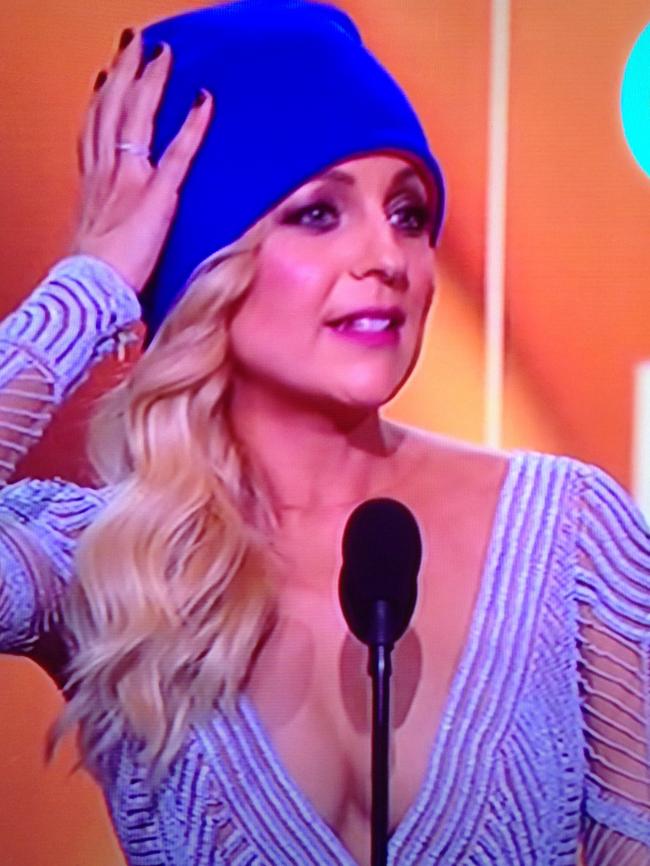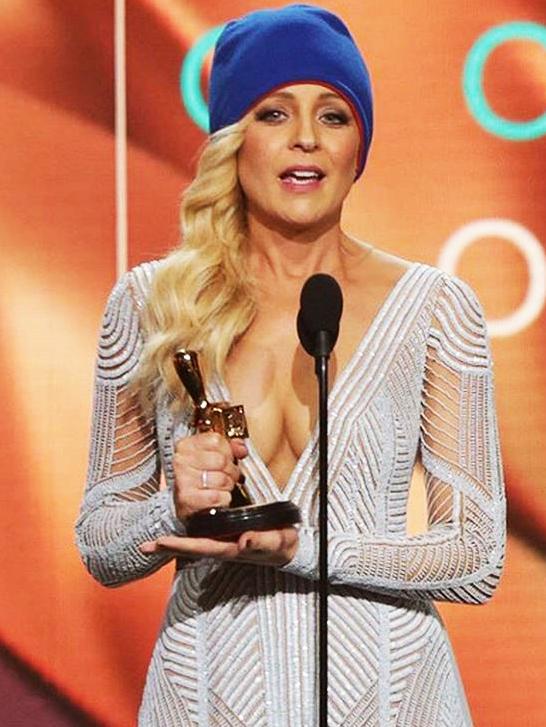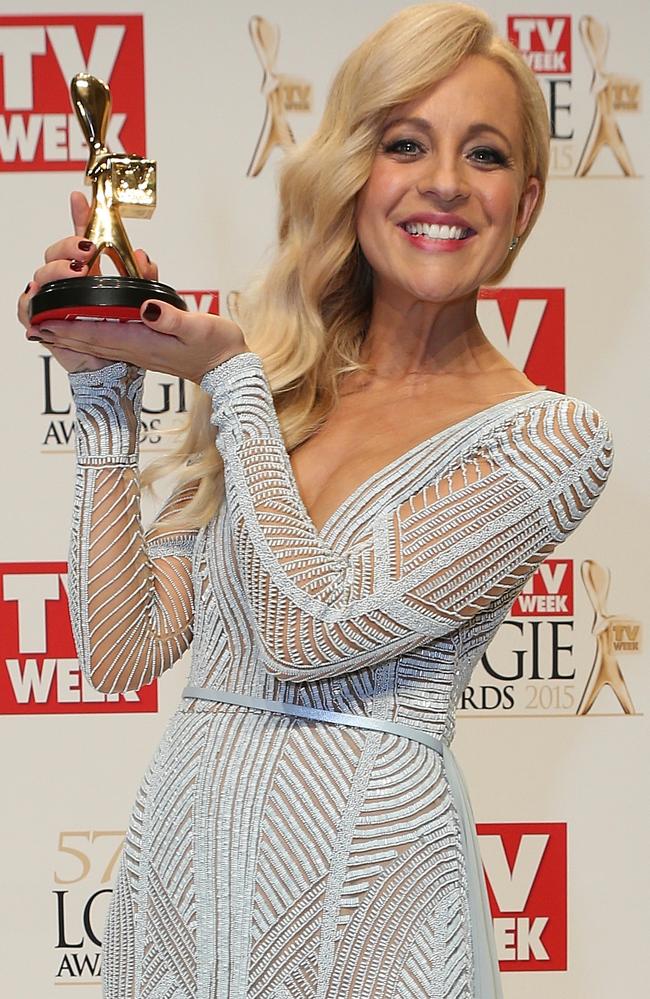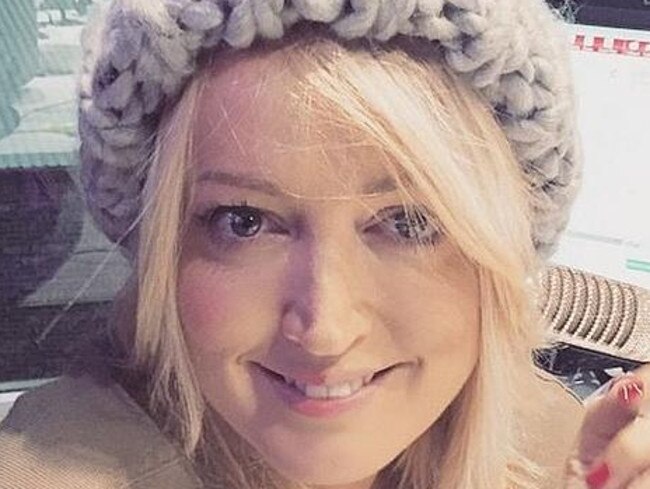Logies 2015: What you need to know about brain cancer after Carrie Bickmore’s speech
CARRIE Bickmore’s beanie-clad Gold Logie speech has been described as ‘incredibly significant’. Here’s what you need to know about brain cancer.
Logies
Don't miss out on the headlines from Logies. Followed categories will be added to My News.
IN her beanie-clad Gold Logie acceptance speech, Carrie Bickmore spoke about brain cancer — the illness that claimed the life of her husband.
“Everyone thinks it’s this rare form of cancer, it is not,” The Project co-host said onstage, clutching her gold statute.
“It kills more people under 40 (than any other cancer) — and that’s a lot of you in this room.
“It kills more kids than any other disease.”


Cancer Council Victoria chief executive Todd Harper described Bickmore’s words as “incredibly significant”.
“She deserves great credit for being prepared to use a moment like this which was obviously a great individual honour for her ... to speak about it (brain cancer),” Harper told News Corp Australia today.
“It will help put the spotlight on one of the most challenging of all cancers.”
The mother-of-two, 34, spoke openly about losing her “brave” husband, Greg Lange, to the illness.
“In 2010 my husband Greg (Lange) was one of the unlucky ones,” Bickmore said.
“And after a long, long, long battle he died from brain cancer,” Bickmore said during her two-minute speech.
“Over ten years I watched him suffer multiple seizures a day, lose feeling down one side of his body.”

Wearing a bright blue beanie, Bickmore urged her peers to do the same.
“I want to ask anybody that’s on TV in Australia tomorrow to whack on a beanie I want to get the nation talking about brain cancer — it receives next to no funding which is ludicrous,” she said at the Logies.
“Because without funding more people are going to die and as I just said eight out of 10 people that are diagnosed will die from this disease.”

After watching Bickmore’s plea, Harper said he hoped it would lead to more research and awareness.
“We have such a high number of deaths from brain cancer every year and we know almost nothing about its causes,” Harper said.
“We know that the impact of brain cancer typically affects people in the early stages of life.”
HERE’S WHAT YOU NEED TO KNOW ABOUT BRAIN CANCER
The report Cancer in Australia, by the Australian Institute of Health and Welfare, found:
* Brain cancer is the No. 1 cause of death for young people aged under 40, with up to 120 patients dying each year from the illness.
* The illness is the second-leading cause of death for women aged under 44 behind breast cancer. Sixty-nine women die from the cancer of the brain per year.
* Brain cancer is the leading cause of cancer-related death in children aged under 15 years.
* About 75 children under the age of 15 are diagnosed with brain cancer every year, and about 33 of them won’t survive.

* About 1700 Australians are diagnosed with brain cancer every year and 1100 will lose their fights.
* In Australia, one person is diagnosed with brain cancer every six hours and one patient dies from malignant brain cancer every eight hours.
THE FACTS FROM CANCER COUNCIL VICTORIA
In a statement to News Corp Australia, Cancer Council Victoria said:
* The most common malignant brain cancer is high grade glioma (HGG) and is fatal in nearly all cases.
* Brain cancer is one of the most understudied of all cancers yet receives very little research funding
* No significant improvement has been made in survival rates in almost two decades.
* Brain cancer strikes adults and children alike, with the incidence highest in adults in the prime of life.
* No risk factors have been identified and no screening procedures are in place.
* Brain cancer carries the highest individual financial burden of all cancers with an average cost more than 5 times higher than for breast or prostate cancer.
* There are more than 40 major types of brain tumours, which are grouped into two main types: benign and malignant.
* Headaches are often the first symptom of a brain tumour. The headaches can be mild, severe, persistent, or come and go.
* An individual’s prognosis depends on the type and stage of cancer, as well as their age and general health at the time of diagnosis. For benign tumours that can be completely removed, cure is likely. For malignant tumours, outcomes depend on how slowly or quickly the tumour develops and response to treatment. Across all brain cancers, the five year survival rate in Australia is 22 per cent.
For more information about brain cancer and to lend your support, see cancercouncil.com.au.
Originally published as Logies 2015: What you need to know about brain cancer after Carrie Bickmore’s speech


